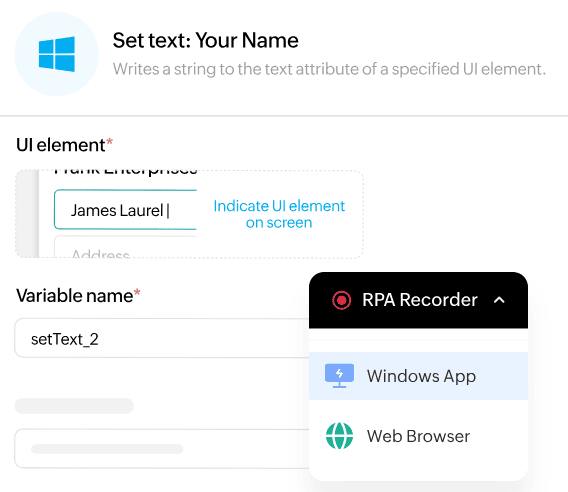
High-Volume Automation (HVA) represents a paradigm shift beyond simple task-based scripting. It refers to the strategic deployment of enterprise systems capable of processing vast, often asynchronous, streams of data and transactions across numerous business functions while maintaining rigorous velocity, data integrity, and compliance. For growing organizations and large enterprises, HVA is not merely a tactic for cost reduction but a critical mechanism for maintaining market competitiveness and achieving organizational resilience. The integration of high-volume processing capabilities within a unified platform, such as Zoho, provides the necessary infrastructure to manage these complex demands.
High-Volume Automation (HVA) and the Strategic Imperative
HVA addresses the necessity for systems to handle peak transactional loads—whether thousands of leads ingested hourly, bulk updates of 50,000 inventory records, or the real-time processing of high-frequency financial alerts. The transition from tactical workflow creation to strategic HVA deployment is fundamentally driven by the need for enhanced organizational agility and the ability to scale without proportional increases in administrative overhead.
The Role of Platform Consolidation and Agility
One of the most profound benefits of implementing a platform like Zoho for HVA is the resulting organizational agility. The rapid application development (RAD) capabilities offered by tools like Zoho Creator, combined with the workflow automation prowess of Zoho Flow, allow organizations to pivot quickly in response to market shifts or new customer demands. This level of adaptability is often unattainable for competitors burdened by rigid, disparate legacy systems.
Furthermore, the adoption of a unified, platform-based ecosystem provides a critical element of future-proofing for the IT stack. By establishing a standardized Zoho One blueprint, organizations gain a scalable foundation. This standardization allows new business entities—whether acquired or newly launched in different geographical regions—to be rapidly integrated onto a common technological and process framework. This centralized approach reduces overall software dependencies and complexity. Zoho's unique position as a vendor with proprietary control over its entire technology stack, from hardware infrastructure up through the application layer, ensures maximum scalability and responsiveness to evolving enterprise IT requirements. The strategic payoff of this unified architecture is that it transforms IT from a department focused on patching and integration into a strategic innovation partner, enabling an Accelerated Time-to-Market for new digital services that far outweighs initial tactical cost savings.
Traditional enterprise IT investments typically concentrate resources on major, widely-used software solutions like core ERP or large CRM systems. This approach often neglects a multitude of smaller, specialized operational needs — collectively known as the "long tail" of digital solutions. These supplementary applications, while small individually, are indispensable for performing specific business tasks more efficiently, often enhancing the functionality of core systems in specialized areas such as e-commerce, retail, and marketing.
Digitizing Niche Processes
Zoho’s low-code development platform, Zoho Creator, plays an essential role in addressing this challenge. Organizations leverage low-code platforms to rapidly digitize these "long tail" solutions, which frequently escape the attention of major enterprise IT initiatives. Examples include highly specialized inventory check-in forms, custom regional compliance portals, or niche process automation tools. If these processes are addressed using external, niche software providers, the resulting fragmentation leads to complex procurement processes, escalating integration costs, and significant compliance risks.
By enabling business analysts and subject matter experts, not just specialized programmers — to rapidly build these necessary high-volume niche tools , Zoho ensures that the entire operational landscape is standardized and integrated. This capability augments the ability of business leaders to make timely strategic and operational decisions, ensuring that even highly specialized, high-volume processes remain within the centralized data and governance framework of the core platform.
Structural Framework of Zoho Automation: Workflow Engines vs. Business Rule Engines
Architecting effective HVA requires a nuanced understanding of the two principal components governing automated processes: the system that dictates the sequence of actions, and the system that dictates the complex logic of decisions. Misunderstanding these distinct roles inevitably leads to inefficiencies and a "tangled mess" of automation.
Workflow Engines: The Path Orchestrator
A workflow engine serves as the sophisticated digital conductor, orchestrating tasks, personnel, and systems through predefined, sequential pathways. It is fundamentally concerned with the "what happens next" sequence, ensuring that work follows the correct, structured journey from initiation to completion. These systems are typically process-oriented, time-aware (tracking durations and deadlines), role-based (assigning tasks to specific departments), and sequential. Zoho Blueprints and standard in-app workflow mechanisms primarily serve this orchestration function, excelling in handling structured processes that follow predictable patterns.
Business Rule Engines: The Decision Maker
In contrast, a business rule engine functions as an automated decision-making system. Its role is to evaluate complex conditions against established logical rules and determine the appropriate action based on those evaluations, often without any human intervention. These systems are decision-oriented, applying complex logic to business data, highly consistent in applying policies, and scalable enough to evaluate thousands of rules simultaneously. In the Zoho context, this complex logic is often implemented through the proprietary scripting language, Deluge, embedded within Custom Functions.
The Fusion for High-Volume Complexity
For high-volume, complex automations—such as applying dynamic discounts based on real-time inventory levels, customer history, and regional compliance factors—the workflow and rule engines must work in unison. The workflow engine (e.g., Zoho Flow or a Blueprint) defines the sequence and triggers when the action should happen, but the business rule engine (Deluge Custom Function) handles the complex logic—the conditional "if-then" evaluation. This necessary fusion is the architectural bedrock for HVA stability and scalability, ensuring consistency in complex decision-making processes.

At the base layer of the Zoho platform, core applications like Zoho Books, CRM, and Inventory provide robust, module-specific automation mechanisms tailored for high-frequency transactional events.
Workflow Rules
Workflow rules constitute the backbone of high-frequency, in-app automation. They allow users to create rules that automatically trigger actions when defined conditions are met. These rules can be configured as Event Based (triggered immediately upon the creation, editing, or deletion of a record) or Date Based (executed on a predefined schedule). Supported actions include critical components of operational efficiency such as email alerts, in-app notifications, field updates, webhooks, and the execution of custom functions. A common high-volume use case involves immediately alerting a VP of Sales via email if a new quote is raised exceeding a specified high-value threshold (e.g., over $10,000).
Blueprints and Field Updates
Blueprints are utilized extensively in human-centric applications like Zoho People and Zoho Desk. They provide a systematic, digital flowchart of business processes, strictly enforcing standardized stages and transitions. For complex, multi-stage, or compliance-heavy workflows (such as employee onboarding or strict SLA adherence in customer support), Blueprints ensure mandatory actions are taken and that processes are auditable. Field Updates are a critical component for maintaining data synchronization in a transactional HVA environment. They allow for the dynamic, automated alteration of form fields as a result of a workflow action, ensuring data consistency and normalization across related records and modules.
Zoho Flow - Cross-Application Orchestrator for Enterprise Scale
Zoho Flow is the platform’s primary engine for managing complex, multi-step high-volume processes that span multiple Zoho services or interact with external third-party applications. It functions as a sophisticated integration and orchestration layer.
Scalability and Task Constraints
Zoho Flow is built to handle significant cross-functional synchronization. While users on Standard and Professional plans have unlimited live flows, the platform’s true scaling limitation is imposed by the Task Limit. For organizations utilizing Zoho Flow as part of Zoho One, the baseline provision is 3,000 tasks per month per organization, supplemented by 1,000 additional tasks for each employee per month. High-volume enterprises must actively manage this task consumption, as rapid, high-frequency transactional flows can quickly exhaust these limits, requiring subsequent plan upgrades.
Polling Frequency Limitations
Another critical architectural consideration for HVA stability is the polling frequency. For Zoho One users, the default polling frequency of triggers is set at five minutes. This delay is inadequate for real-time, customer-facing processes, such as immediate lead scoring based on website activity or instantaneous inventory checks that require sub-second responsiveness.
The necessity of managing the task limit and the 5-minute polling delay dictates that high-volume architects must design solutions that utilize Flow primarily for complex, multi-stage orchestration triggered by instant Webhooks or in-app Custom Functions (which bypass the polling mechanism), rather than relying on Flow as a high-frequency polling machine. This ensures the available task quota is reserved for crucial integration logic, maximizing the platform’s value as a systemic orchestrator.
For high-tier licenses, including Enterprise and Zoho One editions, the primary concurrency limit is set at 20 active calls. Vertical Solutions also adhere to a 20-call concurrency limit. This architecture dictates that a sudden burst of transactional traffic—such as 50 simultaneous webhooks triggered by an external system—will result in immediate failure for 30 of those processes, regardless of the organization’s total API call volume for the day. The system further enforces sub-concurrency limits for particularly resource-intensive operations, such as converting leads, inserting or updating more than 10 records at once, or performing large searches. When either the primary or sub-concurrency limit is breached, the system returns a TOO_MANY_REQUESTS error.
Architectural Implications for HVA Stability
The concurrency-based limitation necessitates a fundamental shift in HVA design away from immediate, uncontrolled burst processing toward a managed, asynchronous architecture. Experts acknowledge that API limits are often avoidable by "writing better code". This involves designing high-volume flows to strictly minimize overlapping calls. Best practice for major uploads and downloads suggests pacing transactions at approximately one per five seconds to ensure stability. Architects must prioritize immediate, customer-facing transactional calls for the limited 20 concurrent slots, while shunting all non-critical, high-volume batch operations into managed queues or utilizing asynchronous Bulk APIs. This is a critical risk mitigation strategy essential for enterprise-grade HVA stability.

Evidence consistently confirms the quantifiable ROI of Zoho HVA across core business functions. In sales, HVA accelerates conversion velocity through intelligent, AI-augmented lead scoring and maintains data quality through automated cleansing. In finance and operations, the platform delivers significant risk mitigation, characterized by error rates dropping by as much as 97% and expense reporting errors falling to zero. The architectural strength, defined by its proprietary cloud-native platform and controlled technology stack, ensures the necessary horizontal scalability to support fluctuating loads. The power of the Zoho approach lies in its cohesive architecture, which utilizes dedicated components for specific needs: in-app workflows for immediate actions , Zoho Flow for cross-application orchestration , and advanced Deluge scripting for complex decision-making and data governance. Crucially, the system strategically utilizes asynchronous Bulk APIs to isolate high-volume data movements (up to 50,000 records) from the high-priority, real-time transactional channels constrained by concurrency limits.
The future trajectory of HVA points toward cognitive automation, where artificial intelligence assumes a commanding role in decision-making and process management. Zoho Zia is already pioneering this shift through predictive analytics, automated data extraction, field prediction, and auto-triage capabilities in applications like Zoho Desk. This moves the platform toward true predictive intelligence, where the system anticipates needs and allocates resources autonomously. Industry analysis confirms this evolution toward Adaptive Process Orchestration (APO), defined by Forrester as the integration of AI agents, non-deterministic control flows, and traditional automation technologies to manage increasingly complex and dynamic business processes. Zoho’s architectural foundation, built on a shared data model and full control over its technology stack , inherently facilitates the development of cohesive, contextual AI solutions. This technological depth positions the platform as a leader in this emerging category of autonomous operations. Organizations implementing a robust, data-centric automation foundation within the Zoho ecosystem today are effectively preparing their IT stack for the next generation of cognitive, adaptive enterprise processes. They are future-proofing their operations, ensuring they can seamlessly integrate the APO capabilities necessary to maintain market leadership as they emerge.

